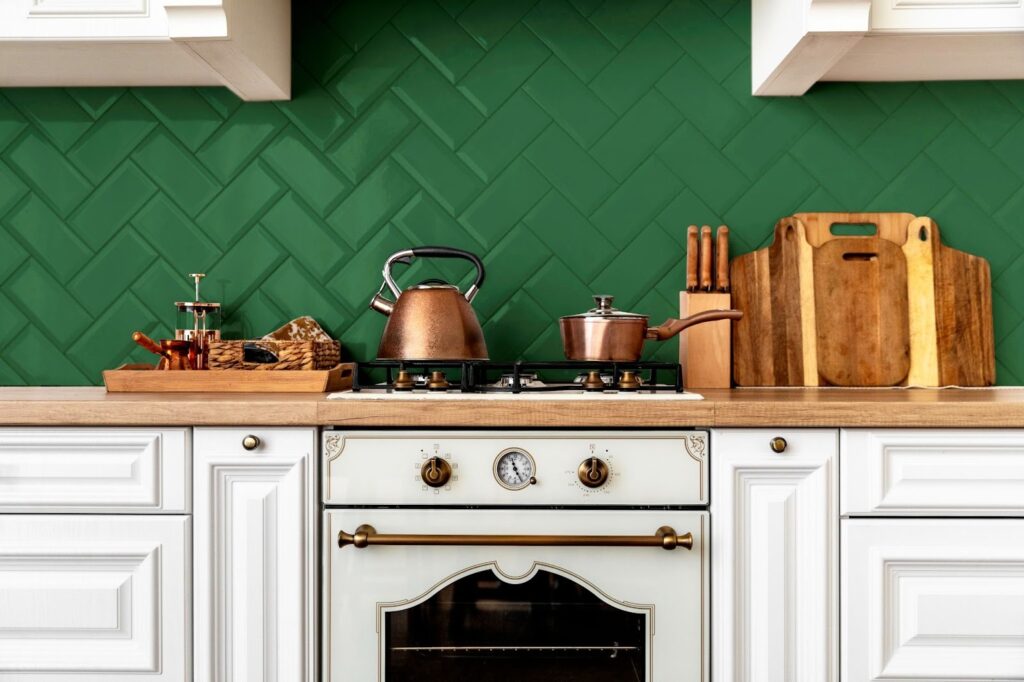All we keep hearing about for quite some time has been the benefits of renovating your kitchen. Suddenly, everybody started renovating their kitchens. Your mother is renovating her kitchen. Your grandmother is renovating her kitchen. Your college colleague, who you have not seen in 15 years, is renovating their kitchen. Not even the pandemic advanced with such mercurial speed. However, it is only natural, particularly given how much we use them. Everything we use, whether people or objects, leaves its mark. The kitchen, as the center of daily life, is no exception. All the more reason, then, for our kitchens to be in impeccable shape.
Largely, the top reasons people renovate their kitchens include:
- Because avocado-green appliances and floral wallpaper haven’t been trendy since your college roommate moved out.
- They saw your neighbor’s sleek quartz surface and realized their laminate screams “1997.”
- They want a kitchen that flows into the living room… and their Instagram feed.
- Sometimes, they don’t have a reason; they just deserve a space that makes them want to cook, or at least sip wine in it.

According To Experts, The Costs To Remodel Your Kitchen Are Around…
According to principal Nikki Pulver of Shaker Interiors, the overall cost of a kitchen renovation is largely determined by what we put in there. Actually, it is about every single thing we put there. Even a microwave can make a huge difference. Most of the time, people spend a tremendous amount of time planning, hoping to find an affordable (-ish) option. Ultimately, they end up spending an exorbitant amount of money. To be more specific, we shall quote some statistics from the National Kitchen & Bath Association’s Kitchen Report, as analysts there have found that the average cost of a kitchen renovation, including materials and labor, is around $71,159. This price, however, can increase significantly for a large kitchen, reaching $137,228.
What these statistics also reveal is a pattern, for kitchens have evolved from functional spaces into showcases of design ambition. This fact also supports the motifs that enthrall so many homeowners into investing so heavily. It is a statement about how they live. In this light, the cost of a renovation is not merely an expense but an investment in experience. Still, not all of us are that reckless. Thus, once again, it is worth mentioning that a variety of items can influence the final budget. While the one thing we know for sure is that the biggest cost element will be cabinetry, breaking down the other elements is not a sure bet. Countertops may be 10%, appliances 9%, lighting 8%, floor covering 7%, and so on. It seems even kitchens are not immune to the domino effect. For instance, the labor cost will significantly increase if removing existing walls, and overall, every seemingly small decision, like a designer backsplash or a statement island, can set off a chain reaction, as specialized materials require skilled labor, a fact sure to add time and cost.
Also, we have determined that remodeling experts get a general idea of the cost by estimating costs to about 15% of one’s entire home value. So, if your home is worth around $200,000, you will spend approximately $30,000 for a kitchen renovation.
How Much Is Too Much?
When it comes to kitchen renovations, resale value is arguably the most critical factor homeowners often overlook. It shouldn’t be a shock that buyers are willing to pay more for high-end touches, though. Also, we’ve been looking through some surveys, and the most recent one suggests that the percentage of homebuyers who list the kitchen among their top three most important spaces settles around 80%. Nevertheless, investing in high-quality but universally appealing features is often wiser than splurging on niche trends. For example, purchasing classic items such as solid oak replacement kitchen doors, neutral cabinetry, durable countertops, and energy-efficient appliances spares you the pressure of constantly changing things just because trends have changed. Conversely, custom colors, ultra-specific layouts, or extravagant fixtures may delight you but limit your buyer pool, reducing the likelihood of recouping your investment.
Resale value also depends on the level of spending. Industry experts suggest that homeowners generally recoup 60–70% of the cost of a mid-range kitchen renovation in resale value. Spending beyond what’s typical for your neighborhood may not yield a higher sale price, for the house simply may not justify it to prospective buyers.
This makes research essential: knowing local market standards and buyer expectations helps avoid over-improving a home.
Maybe You Should Find A Real Estate Expert
Since the very first day, you have to know what sells. You cannot go too low and risk a space that looks outdated or incomplete, but also, you cannot spend too much and risk never recouping your investment. Here, it is a real agent that can be your most valuable guide. There’s no one who knows the market better than they do, and you cannot even imagine how important it is to know which upgrades add the most value and which could be considered overkill. For instance, installing ultra-luxury appliances or exotic stone countertops may be exciting. However, in the mid-range market, these features may not increase resale value in proportion. Conversely, smart choices such as durable countertops, functional layouts, and energy-efficient appliances often deliver the best returns.
Plus, they can help set a realistic budget based on proportional spending and advise how much of your total renovation should go toward materials, labor, or appliances. For example, an agent might caution against installing a $15,000 professional-grade stove if most buyers in your area would expect a standard model. Beyond cost, they provide insight into layout and functionality. While you may find it tempting to remove a wall to create an open-plan space, they can advise whether the investment aligns with what is valued, for sometimes, a smaller, well-designed kitchen can outperform a sprawling but impractical one.

